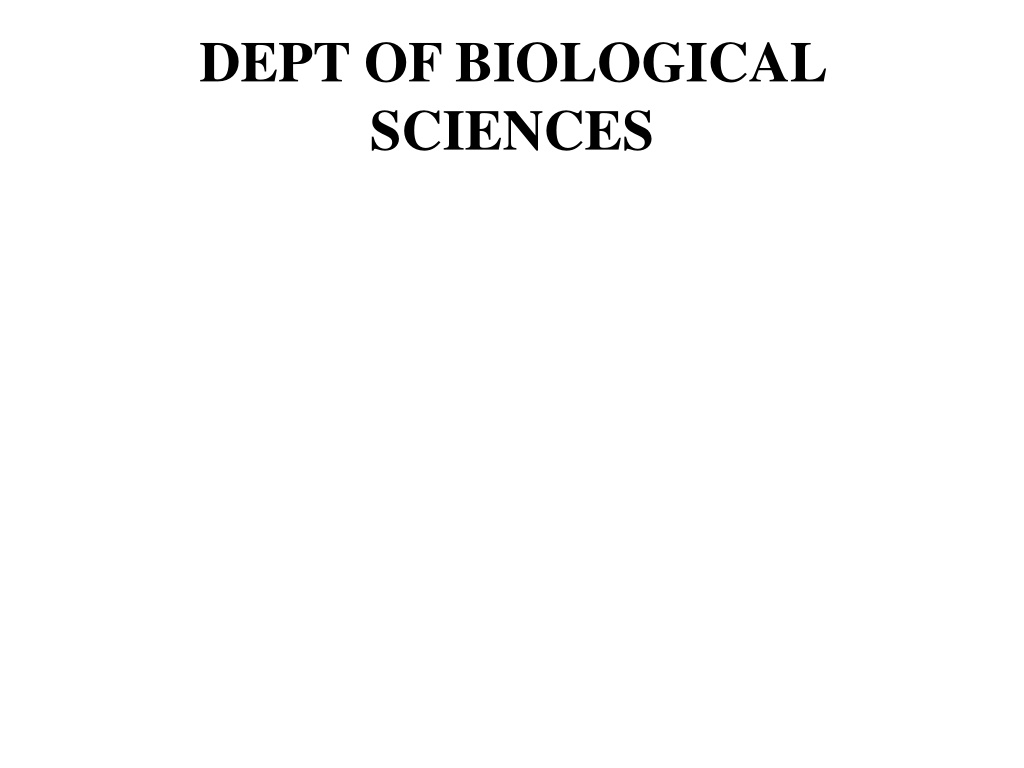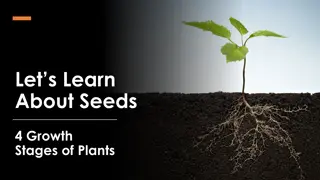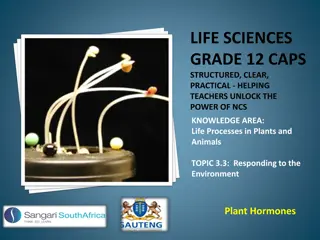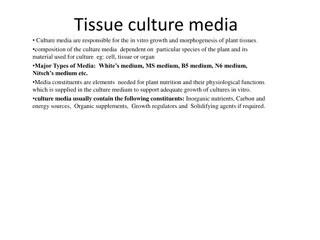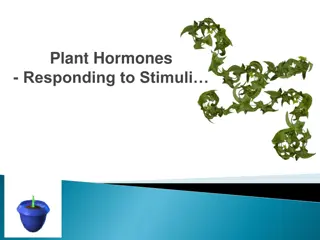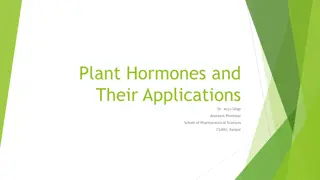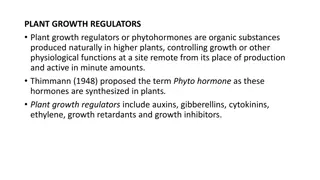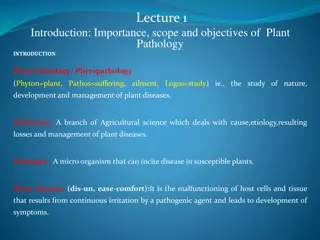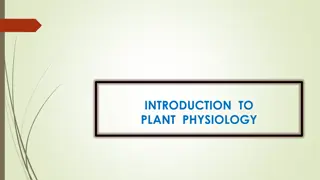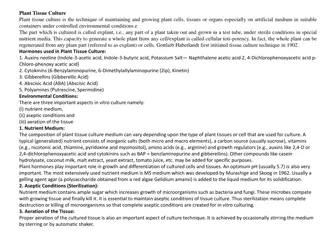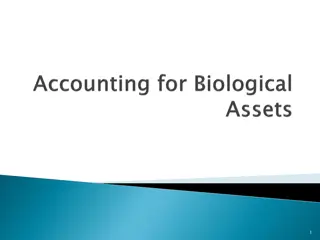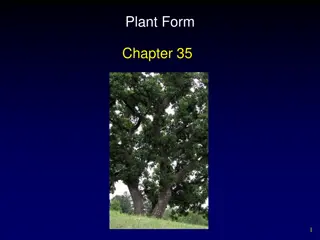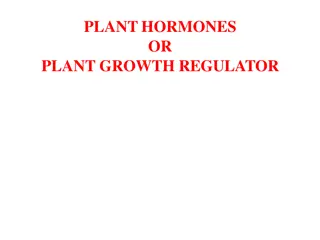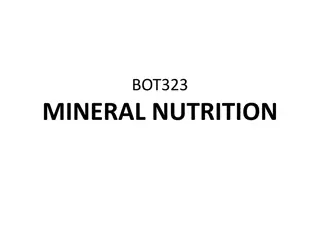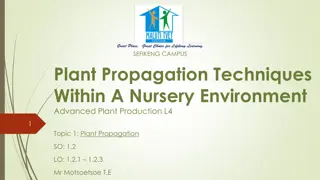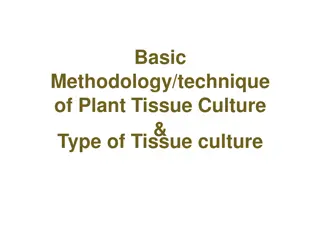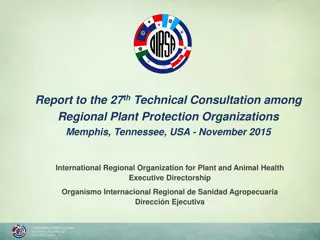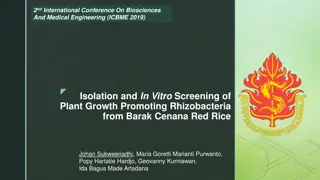Biological Sciences and Plant Growth Dynamics
The journey of a plant's life from germination to flowering involves complex processes like dehydration, utilization of stored food, and gradual development of synthetic systems. After fertilization, the embryo undergoes growth until water content decreases, slowing down seed metabolism. Explore the fascinating world of plant development through images depicting stages such as germination, fertilization, and embryo formation.
Download Presentation

Please find below an Image/Link to download the presentation.
The content on the website is provided AS IS for your information and personal use only. It may not be sold, licensed, or shared on other websites without obtaining consent from the author. Download presentation by click this link. If you encounter any issues during the download, it is possible that the publisher has removed the file from their server.
E N D
Presentation Transcript
DEPT OF BIOLOGICAL SCIENCES
Germination is the resumption of metabolic activities by the seed tissues and it involves
Gradual development of synthetic systems which enable the young plant to be autotrophic ,
Life of a flowering plant starts after fertilization which is double in the embryonic sac . The egg nucleus fuses with one male nucleus
(2n) embryo
Nucleus endosperm (3n)
After this fertilization embryo undergoes some growth
Growth stops falls water content of seed metabolism slows down
Plant may die if herbaceous or annual but do not if shrubs or perennial seeds are dispersed
When seed are shed the degree of development of embryo varies in different plant s.
In orchids (orhidaceae) ___________ embryo consist of undifferentiated cells.
In grasses (Graminneae) ______ embryo well developed and already differentiated into leaves, nodes and roots.
In dicotyledons _________ partial development of embryo with plumule developing to shoot and radicle to roots .
The mature seed when released from the parent plants contains the embryo in a metabolically inactive dormant state.
and divide growth is visible in the radicle before the plumule (emergence of radicle is normally taken as sign for germination.
of the stored food and the resulting soluble products are translocated to the growing embryo. Thus no cell division in the storage tissue.
viable for some time under harsh environmental conditions like some seeds being able to withstand the dry and cold seasons.
cereals by preventing germination immediately after the harvest of the seeds. The seeds can germinate after been stored in a dry place for months.
Seed coat dormancy - obtains when seed coat is hard and
Impermeable to water e.g. in leguminous like flamboyant, parkia.
Physically prevents embryo expansion e.g. Amaranthus.
not germinate immediately under favourable optimum conditions butt do so after a period of dry storage. Examples are cereals like wheat, maize, rice, sorghum millet, barley, oat.
Obtains when the embryo of the seed is partially mature when fruits are shed. Fully mature embryo has to be attained before germination could be obtained. E.g. Ricinus.
inhibitors are present in seeds at 5 10ppm, dormancy result e.g. in Milicia excelsia, Francinus Excelsus, Absicisic acid, ammonia, parasorbic acid, dehydracetic acid.
promoters are lacking in seeds, dormancy results. Examples of promoters are Gibberilins, cytokinins, auxins and ethylene. No example yet.
light before they will germinate e.g. letuce seed (Lactuca sativa) pepper grass seed (Lepidium virginicum) Xanthium pennsylvancium, Rumex cripsus L. Rumex obtusifolius
adequate aeration for weeks before germination is obtained. e.g. Brassica juncea; Poa pratensis; lettuce seed where low temp (150C) can substitute for red light promotion of germination.
treatment that renders the seed coat permeable to water and/or oxygen or weakens the seed coat so that embryo expansion is possible. Divisible into
filling the seeds with sand paper; cutting the seed coat with a knife; breaking the seed coat with a pressure of 500 2000 Atmospheres; heating the seeds in boiling water or in the oven and applying radiations like infra red, X ray, on the seeds.
coat. Achieved by dipping seeds into strong acids e.g. H2s04; organic solvents e.g. acetones alcohol; using enzymes like hemicellulase and pectinase, soaking in water, salt and hormones solutions.
seeds having after ripening dormancy. The seed are either stored in a dry place or are placed in heaters to reduce the seed water content.
with immature embryos are left in an environment favourable to germination until when the embryo is fully mature.
Light treatment exposing wet seeds to red light (climax 660nm) for 10hours at 250C. This is by
